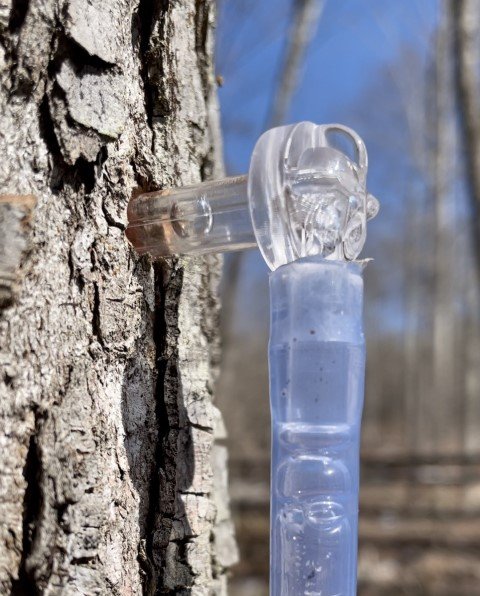Watching and Waiting
Waiting and Watching
It is that time of year. We are rushing and waiting all at the same time. Rushing to make sure we are all prepared to tap and boil and then waiting to tap and boil. Some of our northern colleagues have already boiled, we have yet to tap. It is not a race or a competition but when we hear of others tapping and boiling, it causes us to question if we have missed a run. So far, 2023 has caused us to ask a lot of questions. It has been a wet and weird year thus far. We prefer our precipitation as snow this time of year. We’ve had rain, sleet, and snow which is a slick and mushy combination. Please bring winter back.
We’ve had some wonderful sunrises on the farm, but very little snow.
A Little Biology
The trouble with a winter like this - one without a long, hard freeze, is that the trees are not adapted for it (and frankly neither are maple producers). Maples, sugar maples in particular, like a cold winter. Warmer or more unpredictable temperatures are directly responsible for more variable seasons and the sugar content in the sap. Many of you have heard that it takes about 40 gallons of sap to make a gallon of syrup. That ratio depends on the sugar content of the sap you start with. More and more, we are seeing lower sugar content in our sap. Climate change is impacting the sugar content in maple sap by causing changes in temperature and weather patterns. Warmer temperatures earlier in the season can lead to an earlier start to the sap flow, which can result in lower sugar content in the sap. Additionally, changes in precipitation patterns can also affect sugar content, as dry periods can lead to a lower concentration of sugar in the sap.
Sugar content in sap has been decreasing with warmer and more variable weather.
Here is a bit of amazing biology. During the winter, a maple tree converts starch stored in its roots into sugar and sends it up to the branches. Osmosis and the winter freeze/thaw cycle play a role in the movement of sap. Maple winter sap flow is caused by pressure in the stem generated by alternating daily cycles of night freezes and warm days. When daytime temperatures rise above freezing, sap flows down from the branches to the roots or some of escapes out through a tap hole. Most trees have not adapted to winters and freezing temperatures by moving sap like this and no other tree has sap as sweet or delicious as maple trees. This concludes our science lesson today!
Cleaning tanks is just one of the many things we do to keep busy - always cleaning with a smile!
Just Keep Busy
“What do you do while you are watching and waiting?” you may ask. We have a long list of things that we do to get ready – all of them glamorous. This January we have sighted lines, cleared brush, installed new lines, and cleaned out tanks. We are ready to go except for deploying our new monitoring system. With the help of a Grinspoon Grant, we invested in a Datacer (I never pronounce that word the same way twice) monitoring system. The system will monitor tank levels and vacuum in our lines, making it much more efficient for us to collect sap and fix leaks. This technology may not help with the nerves but will be invaluable to check tanks in the middle of the night and the middle of the woods from our phones!
As I write this, it looks like we will start tapping next week. Please keep us in your thoughts and send an Arctic chill our way. We are looking forward to making some great maple for you all this year.



